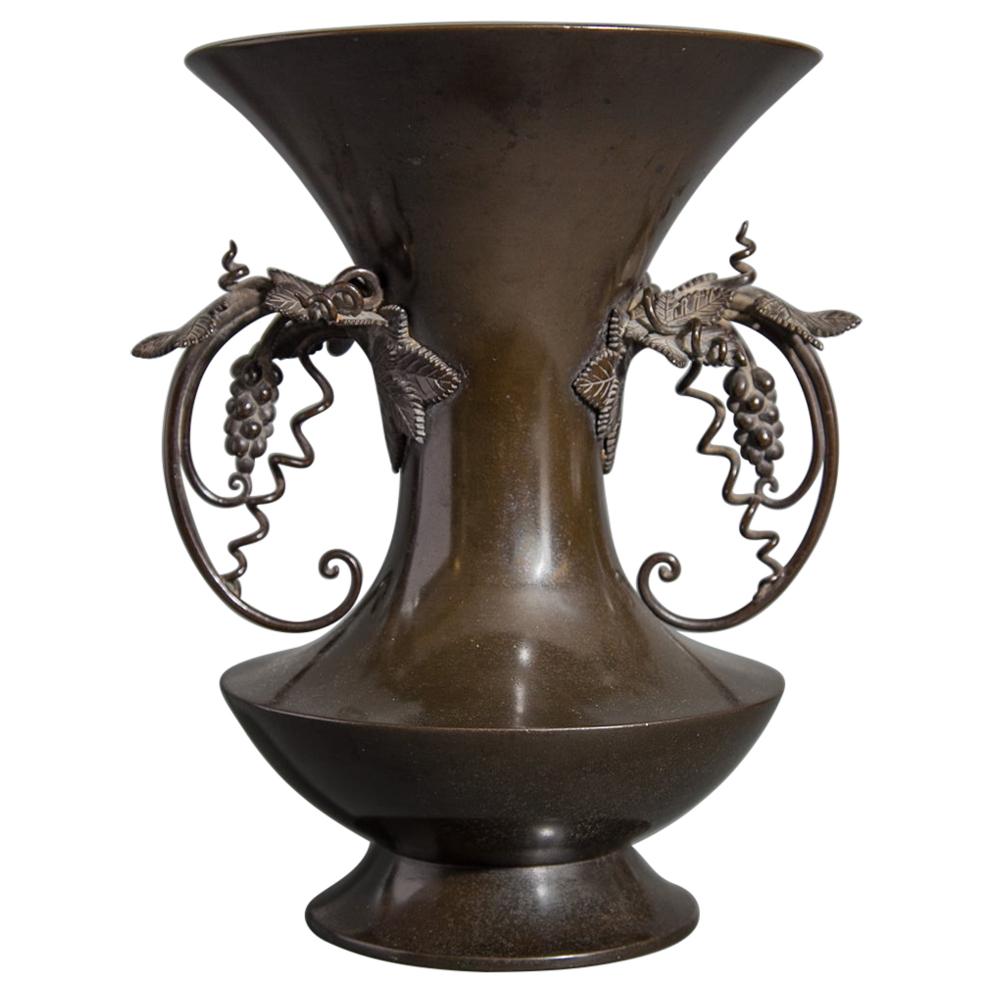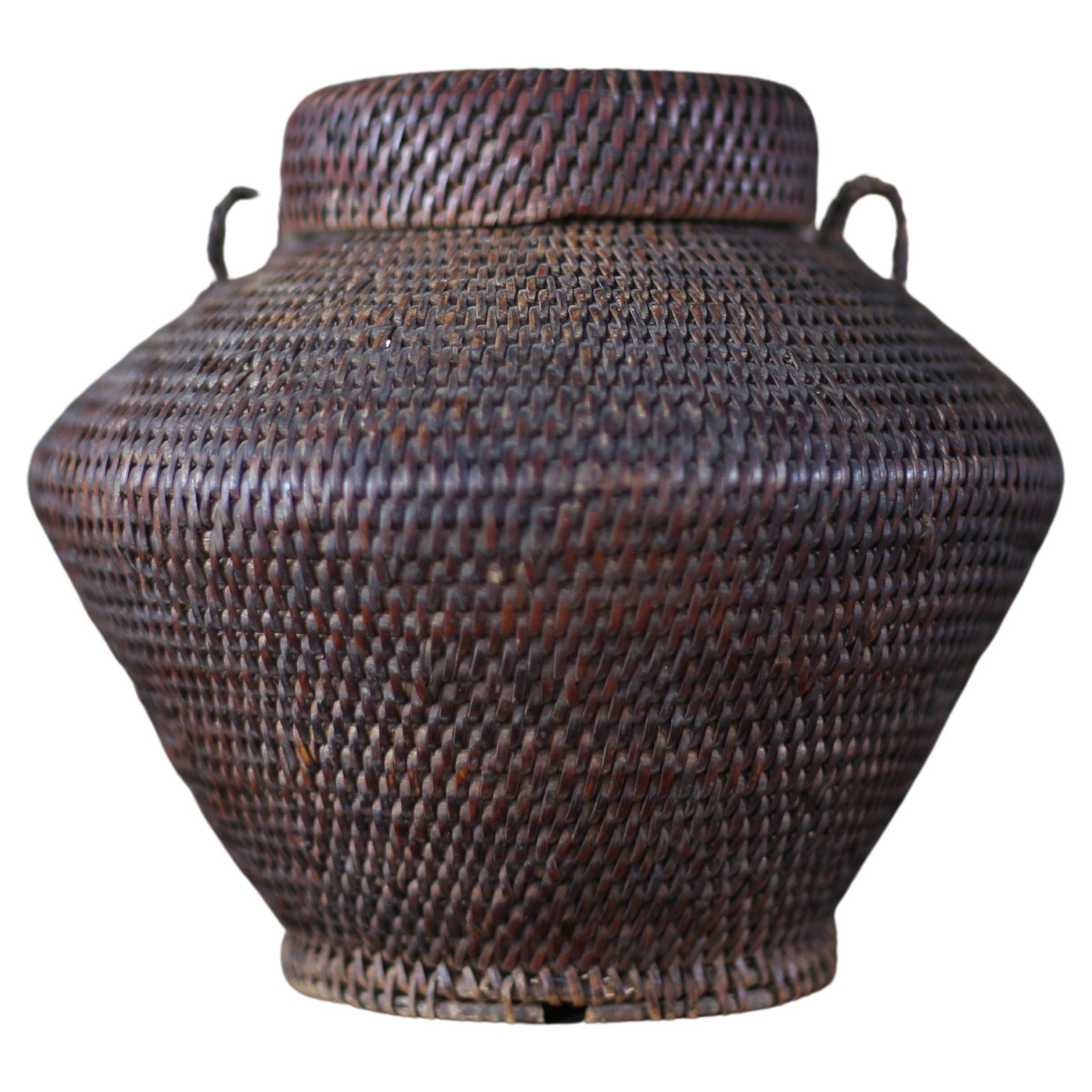Items Similar to Old Lard Stone, Vine and Grapes, Period, Late 19th Century, Quing Dynasty
Want more images or videos?
Request additional images or videos from the seller
1 of 8
Old Lard Stone, Vine and Grapes, Period, Late 19th Century, Quing Dynasty
About the Item
Very beautiful Far Eastern work in "lard stone". The finely carved base is in brown stone.
This sculpture represents a vine with generous and abundant foliage and bunches of grapes. The grape was consumed only by the royal family in China, which is why today it is a symbol of wealth and luxury.
The grape grows in clusters and represents family unity and harmony.
Period: Late 19th century – Qing Dynasty.
Dimensions: Height: 18.5cm x Length: 27.5cm x Depth: 9cm
Base dimensions: Length: 30cm
Signature under the base
"Lard stone" is a steatite (aluminous silicate, iron and magnesia hydrate), white-pale green in color and mottled gray and orange.
It is a kind of very soft jade, allowing really easy cutting, traditionally used in the Far East for making small objects, statuettes, Fô dog, pagodas, magots, sculpted and polished seals.
Composed mainly of magnesium silicate, it is also the main source of talc.
This powder spreads easily by simple rubbing. The name "bacon stone" used by some authors does not really seem to correspond to steatite, which they describe as a "greasy-looking" rock.
But it is possible that the rather particular touch (a little soapy) of this mineral produced this name and this description. It was widely imported into Europe in the 18th century.
- Dimensions:Height: 7.49 in (19 cm)Width: 11.03 in (28 cm)Depth: 3.55 in (9 cm)
- Style:Napoleon III (In the Style Of)
- Materials and Techniques:
- Place of Origin:
- Period:
- Date of Manufacture:19th Century
- Condition:
- Seller Location:CRÉTEIL, FR
- Reference Number:1stDibs: LU7814232857992
About the Seller
4.0
Vetted Seller
These experienced sellers undergo a comprehensive evaluation by our team of in-house experts.
1stDibs seller since 2022
9 sales on 1stDibs
Typical response time: Several days
- ShippingRetrieving quote...Ships From: CRÉTEIL, France
- Return PolicyA return for this item may be initiated within 14 days of delivery.
More From This SellerView All
- Brule Parfum - China - Quing Dynasty - Glazed Porcelain Stoneware - Period: 19thLocated in CRÉTEIL, FRMagnificent Chinese perfume burner in porcelain stoneware with turquoise glaze. Very fine work from the Qing Dynasty, in the Ming style, with its shape...Category
Antique 19th Century Chinese Chinoiserie Porcelain
MaterialsPorcelain
- Natural Stone Sculpture - Sodalite - China - Late 19th Century PeriodLocated in CRÉTEIL, FRA very fine piece of natural stone, Sodalite, made in China. Finely chiselled, this large statue depicts a scene of life in which several ancient symbols stand side by side, such as the Phoenix, swallows, a horse, earthly abundance with its luxuriant vegetation, fruit, but also food from the ocean and its generous fish, a man, a woman and a child. First discovered in Greenland in 1806, Sodalite was analysed by a Scottish chemist 5 years later (1811), Mr Thomas Thomson. Several long years went by without it achieving any real success. It was not until 1891 that the stone was recognised as an ornamental stone. It was during a diplomatic trip to Canada in 1901 that Mary de Teck (wife of King George V) discovered Sodalite and fell under the spell of this natural stone. The princess ordered a large quantity of Sodalite to decorate her London flats. Sodalite quickly became fashionable. Period: Late 19th century - Napoleon III Dimensions: Total height with base: 92cm x Width: 31.5cm x Depth: 27cm Dimensions of wooden base: Height: 7cm x Length: 25cm x Width: 23cm But what do these symbols mean? The phoenix, a mythological bird, symbolises purification and rebirth, as it is said to rise from its own ashes. This magnificent bird is also synonymous with good fortune, opportunity and luck in Asian cultures. In feng shui, the phoenix is also one of the four celestial animals (sometimes also known as the red bird or red raven). The red phoenix...Category
Antique 19th Century Chinese Other Abstract Sculptures
MaterialsStone
- Sealing Seal, Zebra Jasper and Silver, Period: 19th CenturyLocated in CRÉTEIL, FRVery nice seal in green zebra jasper with black stripes. The zebra jasper is the "anti-apathy" stone. It allows to be optimistic in spite of the stress of the life and gives mo...Category
Antique 19th Century French Napoleon III Desk Sets
MaterialsSilver
- Pair of Satsuma Ceramic Vases Mounted on French Bronze, Period: Meiji, 19thLocated in CRÉTEIL, FRElegant pair of ovoid ceramic vases mounted on French bronze, decorated with polychrome enamels in relief and pure gold on a white background. The body is decorated with large carto...Category
Antique 19th Century Asian Vases
MaterialsBronze
- Oak Wedding Cabinet, Normandy, Period, Late 18th-Early 19th CenturyLocated in CRÉTEIL, FRImportant Norman wedding cabinet, old oak of very good quality. It consists of a straight body with straight uprights topped by a horizontal cornice. This crowning, very worked and richly decorated with a splendid medallion of sculptures in relief representing a basket of abundance, filled with roses and grapes surrounded by the two doves of Love. On each one is represented, the second part of the eighteenth fable of the book I of Jean de La Fontaine located in the first collection of the Fables of La Fontaine, published for the first time in 1668, "The Fox and the Stork", it tells us, the revenge of the Stork, which in its turn invites the Fox to her house. The Stork prepares a delicious meat, but cut in small pieces and put in a vase with a long neck, depriving the Fox of his meal. It opens on three beautiful shelves and a drawer in perfect condition. The lock and the key are also original. Period : End of 18th century - Beginning of 19th century Dimensions : Height : 230cm x Width : 148cm x Depth : 48cm It is in the 18th century that the Norman wardrobe takes its characteristic shape, it combines structure and Louis XV repertoire with Louis XVI motifs. It is at this same time of economic and social stability allowing a certain elevation of the living conditions that it enters the bourgeois and peasant residences. Today, it still symbolizes in the eyes of all marriage and creation of the new home. It was brought as a dowry by the bride along with her trousseau. The sculptures were varied. The profession or the hobby of the father of the bride...Category
Antique 19th Century Cabinets
MaterialsOak
- Old Black And Gold Silk, 19th CenturyLocated in CRÉTEIL, FRMagnificent old black and gold silk. This very beautiful piece is a sumptuous work from the end of the 19th century, most certainly a personal order in a very good quality fabric, black in color and stamped with small cross pattées, Templar crosses...Category
Antique 19th Century Textiles
MaterialsSilk
You May Also Like
- LATE 19th CENTURY ITALIAN STONE MORTARBy Europa AntiquesLocated in Madrid, ESLATE 19th CENTURY ITALIAN STONE MORTAR Faithful reproduction of a 13th century mortar in light Sannio limestone. The reproduction was carried out maintaining the original proportio...Category
Antique 19th Century Italian Baroque Vases
MaterialsStone
- 19th Century Superior Quality Japanese Bronze Vase with Grape Vine HandlesLocated in Hudson, NY19th century superior quality Japanese bronze vase with grape vine handles. Beautifully shaped Edo period (first half of the 19th century) vase with c...Category
Antique Early 19th Century Japanese Edo Metalwork
MaterialsBronze
- Porcelain vase, late 19th centuryLocated in Saint-Ouen, FRPorcelain vase, late 19th century Porcelain vase, late 19th or early 20th century, Napoleon III style. H: 33 cm, d: 22 cmCategory
Antique Late 19th Century European Napoleon III Vases
MaterialsPorcelain
- 19th Century French Painted Ceramic Barbotine Vase with Vine, Grape & Leaf DecorLocated in Dallas, TXThis large, antique hand painted ceramic wine jar was created in France, circa 1890. The tall vase with brown handles shaped like old vines, is embellished with colorful black grapes and green cabernet leaves in high relief. This colorful vessel...Category
Antique Late 19th Century French Vases
MaterialsCeramic, Terracotta
- Japanese Old Vase with Lid / Late 19th CenturyLocated in Sammu-shi, ChibaThis is a woven bamboo basket made in Japan during the Meiji to Taisho eras (1868-1920). It is a vase that imitates the shape. It was hung on t...Category
Antique Late 19th Century Japanese Meiji Vases
MaterialsBamboo
- Late 19th Century Gustave Asch Blue Ceramic Vases Wine Grapes and LeavesBy Gustave AschLocated in Brooklyn, NYPair of signed and numbered Gustave Asch porcelain vases crafted by Gustave Asch in the late 19th century. Each vase is highlighted with cascading wine grapes, branches and leaves, a...Category
Antique Late 19th Century French Art Nouveau Vases
MaterialsPorcelain





